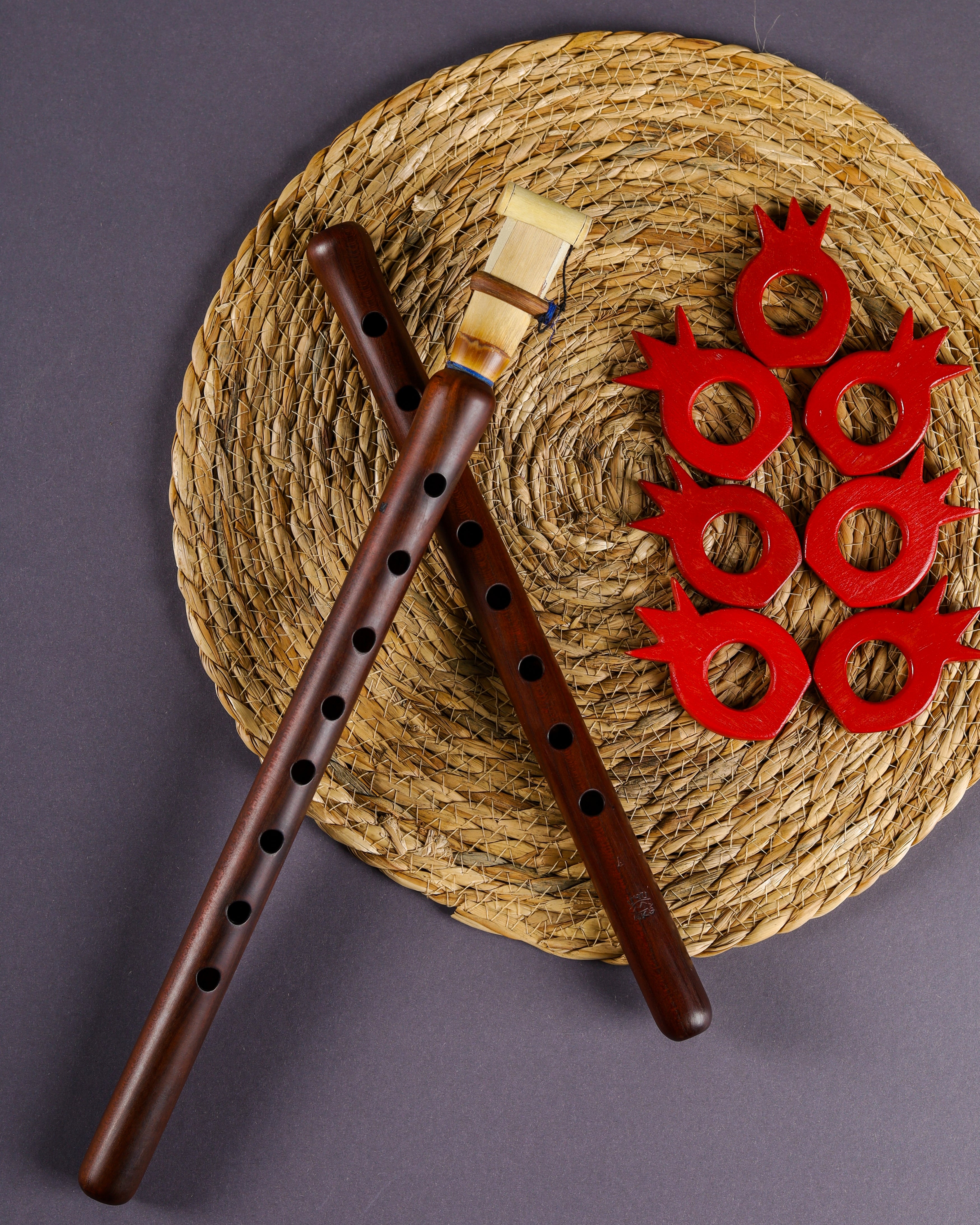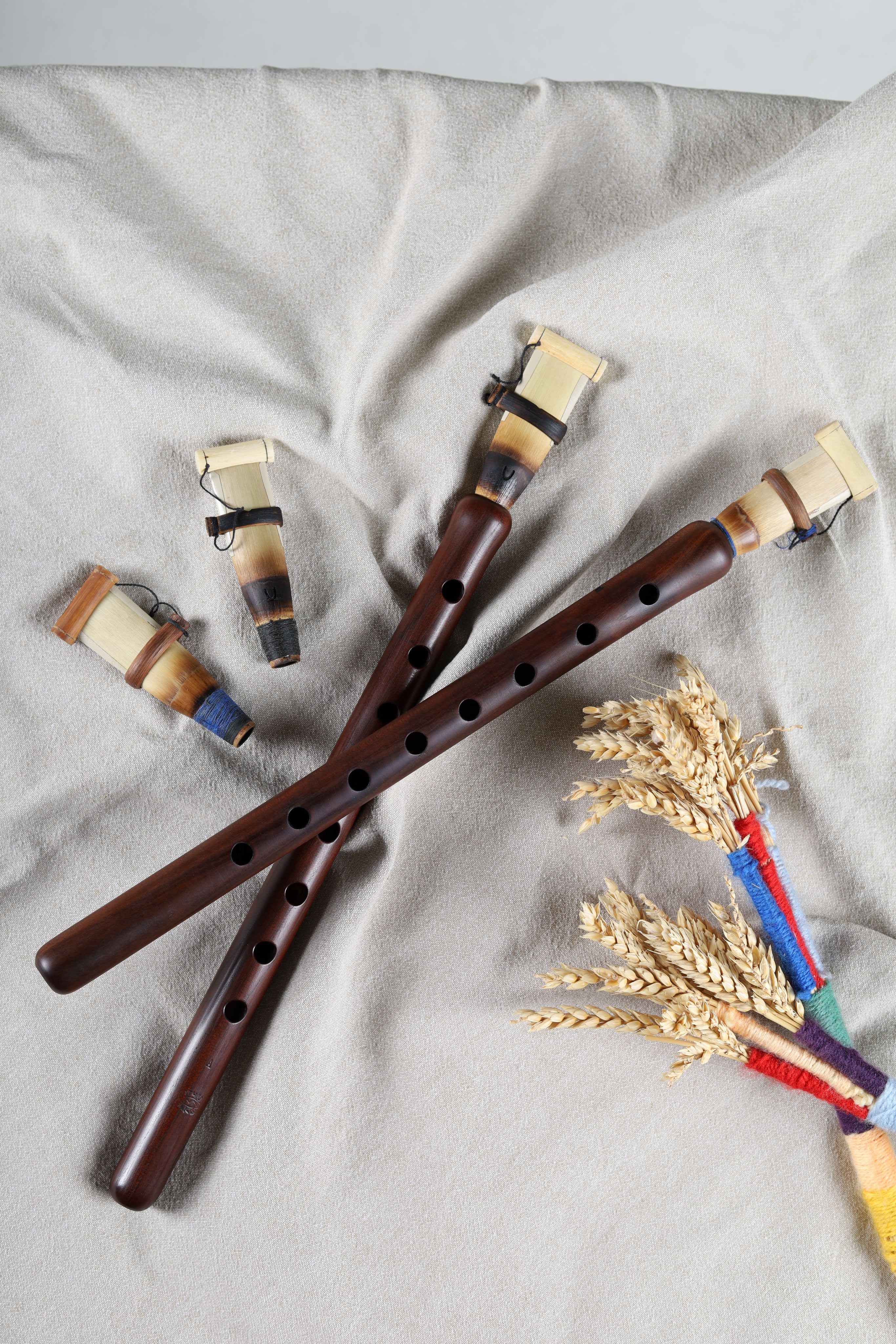Introduction
The Armenian duduk playing technique is based on specific musical approaches that give this instrument its unique sound, imbued with mystery and emotion. Among these techniques, ornaments play a central role. These embellishments, which enrich the melody with subtle nuances, can be difficult to grasp for beginners or self-taught musicians. This article aims to shed light on the different forms of ornamentation used on the duduk, helping all enthusiasts of this instrument better understand its musical language.
What is an Ornament?
The term “ordnament”, originally used in disciplines such as architecture or calligraphy, refers to a decorative detail added to enhance a structure or letter. In music, an ornament refers to an additional note or an effect applied to a main note to enrich the musical expression. This embellishment can take various forms: a quick note played just before or after the main note, a vibrato, or a rapid repetition of an adjacent note.
In sheet music, ornaments are sometimes indicated by specific symbols. However, they are generally not counted within the measure and are executed spontaneously by the musician.
Each musical culture has its own ornaments, which vary depending on traditional instruments. In the case of the Armenian duduk, ornaments are created through variations in fingering and breath, offering a rich sound that is characteristic of Armenian music.
Ornaments on the Duduk
In the context of duduk playing, ornaments hold a key role in the transmission of Armenian musical culture. However, it is challenging to precisely define these embellishments as they stem from an intuitive practice and oral transmission.
Rather than being codified or systematically noted on sheet music, ornaments are often the result of the musician's personal interpretation, influenced by their learning, style, and emotions. Their function goes beyond mere sound embellishment to become a fully-fledged language, carrying a strong cultural identity. Each ornament tells a story, conveys emotion, and reflects the musician's personality.
Although teachers do not systematically use academic terms to refer to ornaments during duduk lessons, a musician with formal musical training will be able to recognize techniques such as trills, mordents, appoggiaturas, acciaccaturas, gruppettos, or glissandos by ear. While these terms are not often explicitly mentioned in oral transmission, they are nonetheless present in duduk playing and significantly enhance its expressive richness.
Mastering the art of ornamenting a melody can only be fully understood through practice and careful listening to the great duduk players. These subtle gestures, often imperceptible to an untrained ear, give the duduk its profound depth and mystery. Thus, more than a mere technical addition, ornaments embody the very essence of Armenian musical expression.
The Cultural Specificity of Ornaments
In traditional music, ornaments are not just simple decorative elements added to enrich a melody. They represent a musical language in their own right, carrying symbols, emotions, and deeply rooted traditions from the cultural history of various peoples. Misusing these ornaments can be perceived as an alteration of traditional music and a violation of the intangible heritage passed down from generation to generation.
By listening to musicians from diverse cultures—Persian, Turkish, Georgian, Azerbaijani, Kurdish, or Western—one can observe that each musical tradition has its own practices in ornamentation. These cultural variations directly influence the sound identity of traditional instruments, including the duduk. Ornaments provide a distinct personal and cultural touch to each performance, making duduk playing a recognizable art across different traditions. They express subtle nuances that reflect not only the musician's technical skill but also their connection to the traditions and values of their cultural heritage.
The Importance of Personalized Teaching
Unlike Western instruments, where ornaments are often noted on the sheet music, duduk scores are generally devoid of such indications. Learning the duduk thus relies heavily on attentive listening and the reproduction of gestures taught by the teacher.
An experienced teacher can help you:
- Understand the different forms of ornamentation.
- Incorporate these techniques into your playing.
- Develop an interpretation that is both personal and faithful to tradition.
Conclusion
Ornaments are at the heart of the musical identity of the Armenian duduk. Mastering them requires great rigor, patience, and a solid understanding of traditional music.
The originality and complexity of the ornaments used can quickly reveal a musician's level of expertise. Whether you are a beginner or an experienced player, understanding and applying ornaments is essential to capture the full emotional depth of the duduk.

